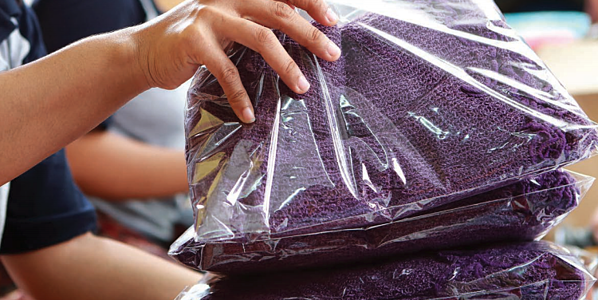Markets and consumer demands are changing, and retailers are being tasked with finding ways to use more recycled plastics in an effort to create a “green” culture. This has put greater pressures on wide-format printers to provide stellar products on imperfect materials. “We haven’t seen a big push, but more of a shift from clients,” said Scott Crosby, Vice President of Sales and Marketing, Holland & Crosby Ltd., of Ontario, Canada. “The idea was that you had signage or bags that could be recycled — that was a bonus — but we found that items were being thrown away. Now, we’re seeing retailers say, ‘Let’s print on plastics that already have been recycled,’ because that makes them feel better and is seen as a more practical green solution.” Cost and quality concerns have prevented a widespread adoption of printing on recycled plastics, but the rapid evolution of digital technologies are creating new opportunities for retailers and printers alike. Crosby and others say printers need to know the issues associated with printing on these materials and start educating their clients about the drawbacks and long-term potential of doing so. “Generally, retailers will glom onto one chemical they want out of a product, so they’ll say they don’t want to use something that has styrene or PVC in it without looking at the ramifications of what that means,” said Marci Kinter, Vice President, Government and Business Information, SGIA. “They don’t know what taking a specific chemical out will do when you’re trying to print something.”
Cost and quality concerns have prevented a widespread adoption of printing on recycled plastics, but the rapid evolution of digital technologies are creating new opportunities for retailers and printers alike. Crosby and others say printers need to know the issues associated with printing on these materials and start educating their clients about the drawbacks and long-term potential of doing so. “Generally, retailers will glom onto one chemical they want out of a product, so they’ll say they don’t want to use something that has styrene or PVC in it without looking at the ramifications of what that means,” said Marci Kinter, Vice President, Government and Business Information, SGIA. “They don’t know what taking a specific chemical out will do when you’re trying to print something.”
The Demand for Ecofriendly Products and Processes: Printers are becoming more focused on developing products that have a smaller environmental footprint. And while it does cause roadblocks in their processes, the push to print on recycled plastics is a natural part of the green evolution, according to Brian Hite, President, Image Options.
Sustainable Considerations: Digital print technologies have revolutionized the industry, improving efficiency and consistency while automating workflows and reducing labor costs. But the science of mass-production becomes complicated when the surface you’re printing on is imperfect. You must find a balance to meet your customer needs with a quality product while also meeting green standards.
Educating All Involved Parties: As technology and inks improve, printers must find ways to educate their clients about the benefits and challenges of recycled plastics. While retailers may want to tout that they are going green, they must also promote their printing on recycled stock, even if it is less than perfect.